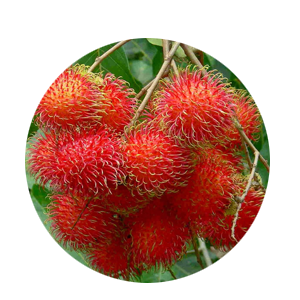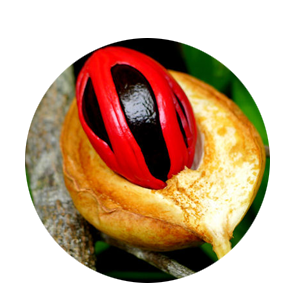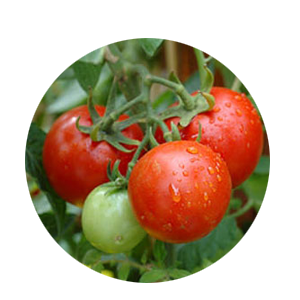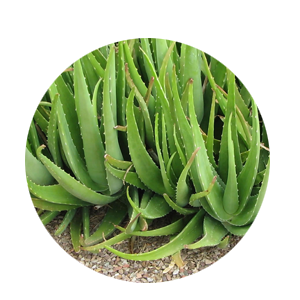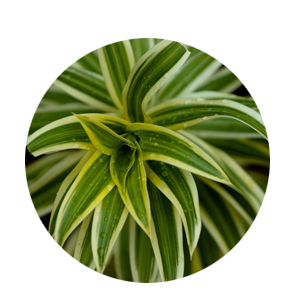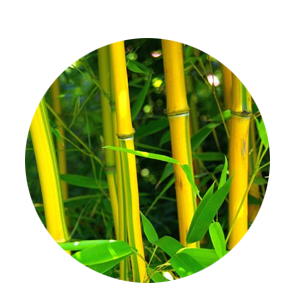Musambi - Grafted- (18x18 bag)

Item Description
General information about mosambi Musambi(Citrus limetta), alternatively considered to be a cultivar of Citrus limon, commonly known as mousambi, musambi, sweet lime, sweet lemon, and sweet limetta.It is native to South Asia and Southeast Asia Citrus limetta is a small tree up to 8 m in height, with irregular branches and relatively smooth, brownish-grey bark. It has numerous thorns, 1.5–7.5 cm long. The petioles are narrowly but distinctly winged, and are 8–29 mm long. Fruits are oval and green, ripening to yellow, with greenish pulp. The pith is white and about 5 mm thick. Despite the name sweet lime, the fruit is more similar to a greenish orange in appearance. Citrus limetta grows in tropical and subtropical climates. It begins bearing fruit at 2 to 3 years old, with peak production at 5 to 10 years. It is propagated by Grafting. Health Benefits Of Mosambi: Mosambi is a versatile fruit with a sweet and sour taste. This amazing fruit renders terrific nutritional value. This fruit is widely consumed in the form of drinks, jams, pickles, candies, snacks and sorbets. The juice of this fruit is also versatile and is used in salads and to marinate meat. Some of the health benefits of mosambi are given below. 1. Aids Digestion: Mosambi has a high content of flavonoids that stimulate the digestive system by increasing the secretion of digestive juices, acids and bile. Hence, mosambi juice is often recommended to people suffering from indigestion, irregular bowel movement and other gastrointestinal problems. Thus, it aids digestion by neutralizing the acidic digestive juices produced by the stomach and flushes out the toxins from the excretory system. The compounds found in this fruit are beneficial for peristaltic motion. Sweet lime also helps in controlling diarrhea, nausea and vomiting. 2. Relieves Constipation: The acids in mosambi flush out the toxins from the bowel tracts. Moreover, the fruit contains dietary fiber, which enables the roughage to act as a purgative treatment for those suffering from constipation. Lime juice with a pinch of salt is often recommended to patients with constipation problems. 3. Prevents Scurvy: Scurvy is a disease caused by the deficiency of vitamin C. This disease is characterized by bleeding, swollen gums, frequent bouts of flu and cold, ulcers in the mouth and tongue, and cracked lip corners. The sweet limes can stop the bleeding of gums. Mix mosambi juice with a few drops of pure water and add a pinch of black salt to the mixture. This mixture should be applied to the affected gums for an immediate relief from bleeding gums. Halitosis (bad breath) can be eliminated by sipping lime juice and sucking on lime rinds. 4. Peptic Ulcers: The flavonoids present in mosambi such as Limomin Glucoside have anti-carcinogenic, antioxidant, detoxifying, and antibiotic properties which are very effective in healing oral and peptic ulcers. 5. Respiratory Problems: The oil extracts of mosambi have anti-congestive properties which clean and keep various respiratory problems at bay. Thus, they are often used in balms, inhalers and vaporizers. 6. Improves The Immune System: The regular consumption of mosambi juice brings about an improvement in the overall heart functioning. Thus, it ensures proper blood circulation and contributes to a much healthier immune system. Vitamin C boosts the immunity levels and prevents cold. 7. Anti-Cancer Properties: The limonoids present in sweet limes help in fighting different types of cancer. Limonoids are attached to a sugar molecule called glucose, which is easily digested. 8. Protection Against Rheumatoid Arthritis: Being rich in vitamin C, mosambi provides protection and prevention against inflammation and swelling. This fantastic fruit also reduces the symptoms of osteoarthritis and rheumatoid arthritis. 9.Facilitates Weight Loss: Mosambi helps in weight loss. Drinking a glass of lukewarm water with lime juice and honey helps to shed those extra pounds. Mosambi juice reduces the cholesterol level and controls the blood pressure. 10. Urinary Disorders: Mosambi has a high concentration of potassium which detoxifies the kidneys, bladder and has the ability to cure infections in the urinary bladder. 11. Gout: The antioxidants present in mosambi help in flushing out uric acid and free radicals from the body. Vitamin C helps in neutralizing the free radicals in the body. 12. Relief From Motion Sickness: The tangy flavor of mosambi provides relief from motion sickness. Drinking a glass of mosambi juice helps in getting rid of heartburn and acidity. It soothes the gastrointestinal tract and reduces abdominal complaints. 13. Treatment Of Sunstroke And Dehydration: Mosambi juice can be a healthy substitute for carbonated drinks as it provides essential vitamins and minerals. This fabulous fruit is highly preferable for athletes after a competition or workout session. Mosambi juice and other lime-based supplements reduce the risk of dehydration and muscle cramps. Limeade made from fresh mosambi juice is used to treat individuals suffering from sunstroke. 14. Beneficial For Pregnant Women: Mosambi juice provides a significant amount of calcium, which is beneficial for the growth of the developing fetus. 15. Benefits The Nervous System: Mosambi juice acts as a coolant for the brain and the nervous system. Mosambi can be used to treat brain fever and mental issues. It is a wonderful sedative as well. 16. Treatment Of Jaundice: This fruit is recommended to patients suffering from jaundice. By boosting the liver function, mosambi is exceptionally effective in treating jaundice. 17. Beneficial For Asthma: A drink made from mosambi juice, cumin seeds and dry ginger powder provides instant relief from asthmatic cough. 18. Relief From Tonsillitis: Vitamin C reduces the severity of cold and fever. A spoonful of honey mixed with mosambi juice and warm water provides relief from a dry, itchy throat and has a soothing effect on inflamed tonsils. 19.Antiseptic & Antibacterial Properties: Due to its antiseptic and antibacterial properties, beauty therapies often use lime extracts for the hair and the skin. 20.Strengthens Hair: Mosambi is used as an active ingredient in several medicinal supplements. The vitamins present in this fruit strengthen the hair. 21.Treats Split Ends & Dandruff: This versatile fruit is used as a natural alternative for the treatment of split ends and dandruff. Skin Benefits Of Mosambi: In addition to several health and hair benefits, mosambi is considered wonderful for skin. Due to its sweet fragrance and high vitamin C content, mosambi juice is often used in several skin care products and medicinal supplements for curing dry or rough skin, moisturizing, improving the skin tone, and promoting healing. Some of the skin benefits of mosambi are given below. 1.. Mild Bleaching & Cleansing Agent: Mosambi juice contains mild bleaching and cleansing agents that are effective in getting rid of pigmentation, acne, spots and blemishes and result in a radiant and smooth skin. 2. Reduces Insect Bite Pains & Lightens Skin Tone: Mosambi helps in reducing insect bite pains and lightening the skin in case of skin pigmentation on the elbows, armpits and knees. 3. Detoxifies Body: The regular consumption of mosambi juice detoxifies the body and imparts a natural glow and shine to the face. It cleanses the blood and reduces skin diseases. 4. Lightens Dark Lips & Softens Cracked Lips: Applying mosambi juice on the lips 3 to 4 times a day reduces the darkness of the lips and softens cracked lips. 5. Enhances Fairness: Mosambi juice mixed with chickpea flour enhances the skin fairness. 6. Cures Pimples: Applying grounded mosambi peel can help in getting rid of pimples. Nutritional Value Of Mosambi: If you are looking for a low calorie or low fat diet, then mosambi is the right choice. One serving of this fruit contains around 43 calories and 0.3 gram of fat. This sweet lime provides 9.3 mg of carbohydrates and 0.8 gram of proteins. Being a citrus fruit, it is rich in vitamin C, providing 50 mg of vitamin C per serving. Moreover, it contributes significantly to the daily potassium requirement (2000 mg) of the body by providing about 490 mg of potassium in one serving. In addition to these, it contains copper, calcium, iron and phosphorus in smaller amounts.
Maintanance, Disease Management And Yielding
MAINTANACE OF THE PLANTATION Once a plantation has been established, the work should not be considered finished. It will be necessary, for example, to protect the plantation against weather, fire, insects and fungi, and animals. A variety of cultural treatments also may be required to meet the purpose of the plantation. FERTILIZING Twice a year, in May/June and September/October (after the rains start), all trees get two or three kilos per tree (depending on the size of the tree) of a citrus fertiliser compound which is sprinkled about one metre from the trunk (it must not touch the trunk). This is a mixture of: nitrogen (20 per cent), phosphorus pentoxide (12.2 per cent), potassium oxide (10 per cent), magnesium oxide 2 per cent), and sulphur trioxide (10 per cent). In addition to this, occasionally when trees seem to need it (yellowing leaves or general weakening), they get an additional small amount of magnesium. WATERING AND WEED CONTROL Young musambi trees should be watered regularly until fully established. In dry western climates, water mature trees deeply at least every one or two weeks. Desert gardeners may have to water more frequently. Mulch the soil around the trees to conserve moisture. Weeding is also very important. Remove all weeds 1.5 meter around the plant. PRUNING AND SHAPE OF TREE Every three years, after the fruit has been picked, branches are thinned out to maintain the strength of the trees and to facilitate light and air entering at all places. This includes clearing out the tree\\\\\\\'s interior and suppressing strong vertical shoots. Pruning often requires the removal of some large branches. PEST & DISEASE FOR MUSAMBI TREES Every fruit tree has the future potential for disease and insect damage. Factors such as location and weather will play a part in which issues your tree encounters. If available, disease-resistant trees are the best option for easy care; and for all trees, proper maintenance (such as watering, fertilizing, pruning, spraying, weeding, and fall cleanup) can help keep most insects and diseases at bay. HARVESTING YOUR MUSAMBI The harvest season is usually between June and September, depending on variety. Fruit matures three to five months after flowering.Mangos should be picked before they are fully ripe, at which time they soften and fall. Fruits are usually picked after they develop some red, orange, or yellow color. Mangos will ripen and may be picked when the flesh inside has turned yellow, regardless of exterior color.
- Propogation Method : Grafting
- Plant Climate : Sub Tropical, Normal, Hot, Cool, Tropical
- Plant Height : 4-5 feet
- Plant Weight : 30 Kg
- Plant Polybagsize : 18x18
Related Images
- Botanical Name : Citrus Limetta
Mosambi, sweet lemon
Planting Instructions
PLANT THE RIGHT TREE AT RIGHT PLACE Growing space both above and below ground should be considered when selecting a tree to plant. Too often allowances are not made for the increased size of the tree when it matures. Most problems can be avoided by selecting the proper tree species for the available planting space. GENERAL TIPS 1. Plant at least 6 to 10 meter from main overhead utility wires on street or to your home. 2. Plant at least 7 meter from a building. 3. Plant at least 2 meter from sidewalks, driveways, patios and fences. 4. Plant at least 7 to 15 meter from other large trees. 5. Plant at least 7 meter from small trees. 6. Prioritize your tree planting with the sun’s direction to maximize shade by planting on the southwestern and western sides of your home BASIC PARAMETERS TO PLANT A MUSAMBI TREE 1. Soil : Deep well drained loamy soils are the best for the cultivation of Citrus. The pH of soil should be 6.5 to 7.5 and EC of water less than 1.0. A dry climate with about 50 – 75 cm of rainfall from June – September and with well defined summer and winter season is ideal. Sweet orange comes up well in tropical zone below 500 m. The extreme of temperature are necessary for achieving higher yield. 2. Planting Distance : For Commercial Plantation :- 7m x 7m for normal plantations and 6 m x 3 m for high density plantations. Adopt high density planting for higher productivity. For Home Garden: -In a home garden generally we are planting one or two musambi trees along with other species of fruit plants. So it is better to keep minimum 7 meter distance from other plants to plant a musambi tree. 3. Pit size : Minimum 60cm width X 60cm Breadth X 60cm depth 4. Sunlight : 100% sunlight is best but can grow up to 50 % shade 5. Watering: During dry weather, initially water the plant once in two days and after one month of planting water every 7 to 10 days during the first year. TEN TIPS FOR PLANTING A MUSAMBI TREE 1. Dig a hole/pit 3 to 4 times wider than the container (Normally 60cm X 60cm X60cm is recommended). Fill the pit with top fertile soil to allow for proper root growth. Avoid clay type soil to refill the pit. 2. Add 250 gm Rock Phosphate or Born Meal and 3 to 5 kg Cow dung or compost in the top soil of the pit and mix it thoroughly (Thorough mixing of manure with soil is very important because direct contact of manure with the roots of the plant will cause the damage of roots and plant). 3. Make a small hole in the pit and carefully remove the plant from the container/pot or poly bag keeping the soil around the roots intact. Don‘t yank the plant out of the pot or poly bag as this can separate the roots from the tree. Poly bags can be easily removed by cutting it by a knife and pots can be removed easily by hitting slightly at the top edge of the pot. 4. Set the plant in the middle of the hole. Avoid planting the tree too deep. Keep the base of the trunk is slightly above ground level. Using some soil, secure the tree in a straight position, then fill and firmly pack the hole with the original soil, making sure there aren‘t any air pockets. 5. If the plant is Grafted or Budded make sure the grafted or budded portion of the plant is above the soil. Do not allow to touch the grafted or budded portion in the soil as it burns the skin of the plant. 6. Create a water-holding basin around the pit and give the plant a good watering. After the water has soaked in, spread protective mulch 2–4 inches deep in a 3-foot diameter area around the base of the tree, but not touching the trunk. Also provide a stich as a support for the plant, if needed. 7. The soil and mulch around your plant should be kept moist but not soggy. During dry weather, initially water the plant once in two days and after one month of planting water every 7 to 10 days during the first year. 8. Remove any tags and labels from the tree as these will affect the tree as it grows. You may need to prune any broken or dead branches. For Budded or Grafted plants it is very important that do not allow the growth of off shoots under the grafted/budded portion. Allow the growth of budded/grafted scions only. 9. Do not use chemical fertilizer or any other chemicals on your newly planted trees. Such products will kill your young trees. If needed you can add chemical fertilizers in small quantity (generally below 100gm) after two to three months of planting with sufficient irrigation. 10. Do not over water or allow rain water so much that you see standing water in the pit area of the plant. It will damage the plants roots and results the die of your plant.







